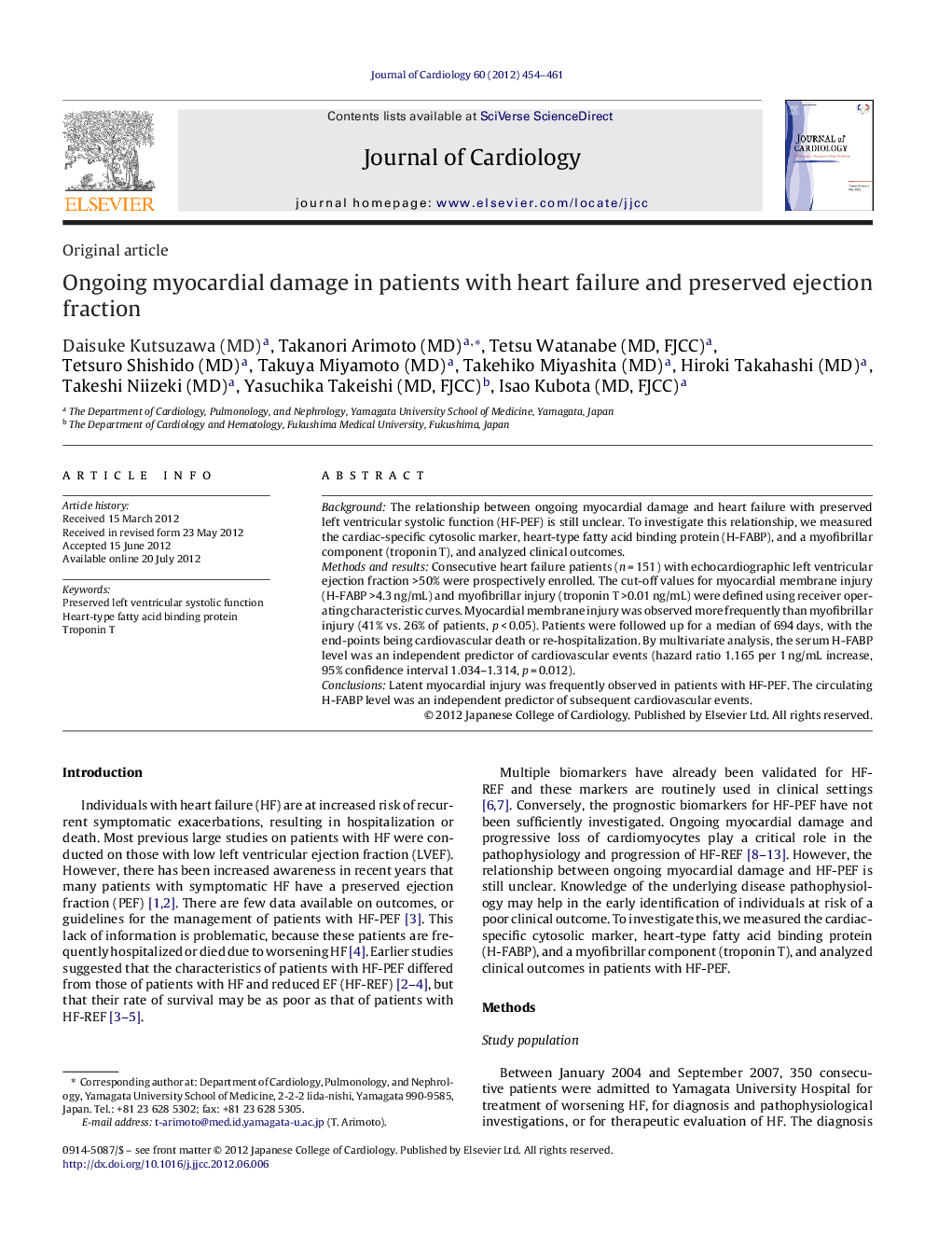| Article ID | Journal | Published Year | Pages | File Type |
|---|---|---|---|---|
| 2963083 | Journal of Cardiology | 2012 | 8 Pages |
BackgroundThe relationship between ongoing myocardial damage and heart failure with preserved left ventricular systolic function (HF-PEF) is still unclear. To investigate this relationship, we measured the cardiac-specific cytosolic marker, heart-type fatty acid binding protein (H-FABP), and a myofibrillar component (troponin T), and analyzed clinical outcomes.Methods and resultsConsecutive heart failure patients (n = 151) with echocardiographic left ventricular ejection fraction >50% were prospectively enrolled. The cut-off values for myocardial membrane injury (H-FABP >4.3 ng/mL) and myofibrillar injury (troponin T >0.01 ng/mL) were defined using receiver operating characteristic curves. Myocardial membrane injury was observed more frequently than myofibrillar injury (41% vs. 26% of patients, p < 0.05). Patients were followed up for a median of 694 days, with the end-points being cardiovascular death or re-hospitalization. By multivariate analysis, the serum H-FABP level was an independent predictor of cardiovascular events (hazard ratio 1.165 per 1 ng/mL increase, 95% confidence interval 1.034–1.314, p = 0.012).ConclusionsLatent myocardial injury was frequently observed in patients with HF-PEF. The circulating H-FABP level was an independent predictor of subsequent cardiovascular events.
